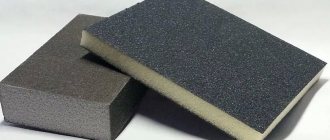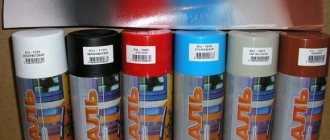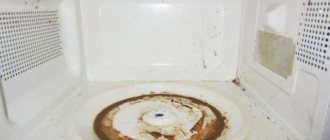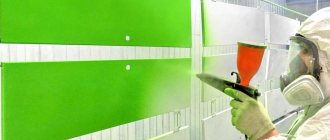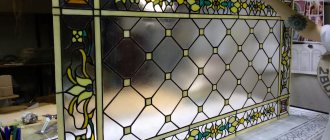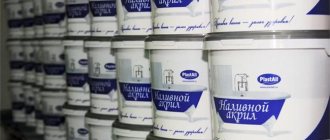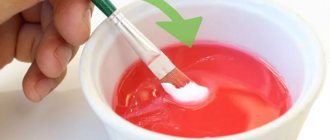Organic glass is widely used in various fields of production and construction; it is easy to process and therefore can be used for the independent production of furniture parts, lamps and interior decorations.
We will tell you how to paint plexiglass at home to give it new decorative properties.
There are several ways to paint plexiglass.
The first way to paint plexiglass:
Tsaponlak is used for painting. First of all, you need to prepare a glass or enamel container of suitable size for immersing the parts. The exposure time in the dye depends on the degree of color saturation you want to achieve. It can range from a few seconds to 15 minutes. If you are not sure about the strength of the tone, you need to test paint a small piece of plexiglass. You can also repaint the glass by first drying it and then immersing it in varnish again.
The second way to paint plexiglass:
The varnish is made at home. To do this you will need plexiglass filings. When there is no sawdust left over from cutting, they can be made using a file. Sawdust must be dissolved in vinegar essence in a ratio of 1:6, that is, one part of sawdust to 6 parts of essence. In this case, precautions must be taken to ensure that the resulting solution does not come into contact with the skin. If this does happen, you should immediately rinse the affected area well with water. Also, you should not allow vinegar essence to get on your clothes and other things - it can ruin them.
After this, a dye is diluted in the resulting solution, which can be ink taken from the refills of ballpoint pens. However, this painting method has one drawback: the choice of colors is limited to four: blue, green, red and black.
In addition, for obvious reasons, this method is not entirely suitable for intensive painting of large surfaces. It is best used to add color to plexiglass parts and small products made from it. When painting, they are not immersed in varnish, because it has the ability to dissolve plexiglass. In this regard, the surface is painted with careful application of varnish.
The third way to paint plexiglass:
Before painting, the surface of the plexiglass should be especially carefully prepared. To do this, wipe it with gasoline and leave it to dry for a while. The sheet is then dipped into a detergent solution with an average temperature of about 50 °C. A saturated solution is prepared at the rate of 1 kg of washing powder per 1 liter of water. The glass is kept for 10-15 minutes, after which it is washed with cold water and then staining begins immediately. The dye must be pre-formulated by adding a special dye for acetate silk to benzyl alcohol. To prepare it, take 5 g of dye per 20 g of alcohol. 2-3 g of ordinary washing powder are also poured into the alcohol solution. After this, the dye is diluted with hot water to the desired consistency. Add 1 liter of water to the indicated volume. The prepared glass is immersed in the resulting paint, at a temperature of approximately 80 °C. Until the painted plexiglass is removed, the dye must be stirred. Holding time approximately 15 minutes.
If you need to paint a small piece of plexiglass, making it spotted with multi-colored paint stains, you can use the following method:
You need to take nitro paint of several colors. Pour 2-3 tbsp onto a sheet of whatman paper. spoons of the paint whose color will be the background. Randomly drip other paints onto the spread base (about 5 drops of two or three different colors). After this, a sheet of paper needs to be bent in an arc and pour the composition onto plexiglass. The paint should cover the entire surface. No brush is used here. If there are large drips, the glass should be placed at an angle to remove excess paint. Naturally, it is recommended to choose a place to work in advance and lay something under the plexiglass to be painted. If the result obtained after drying quickly enough is unsatisfactory, you need to remove the paint using a swab dipped in solvent and repaint the plexiglass again. Linen, you need to remove the paint with a swab dipped in solvent and repaint the plexiglass again.
Products made of organic glass can be given a white color by etching them with sulfuric acid. When exposed to acid for 1-3 minutes, the plexiglass will acquire a milky white color. If you subject the glass to a longer treatment (up to a maximum of 10 minutes), it will lose its shine and become matte. After etching the plexiglass, for which it is loaded into a concentrated acid solution, it must be thoroughly rinsed in running water. It is necessary to remove the product painted in this way carefully due to the fact that the surface softens under the influence of sulfuric acid. If at this time the removed plexiglass inadvertently touches something (for example, a container in which the acid was located), then a groove may remain on it. When working with a solution of concentrated sulfuric acid, you must follow safety rules. It is also possible to apply various inscriptions and drawings to the glass.
Additional decoration
The proposed methods make it possible to obtain transparent colored plates or an imitation of stained glass, a drawing or an inscription on a transparent material. To achieve a different effect, simpler methods of painting with nitro paints or etching are used.
Please note: Painting a plastic window sill with modern compounds
Divorces
Beautiful stains of different shades can be easily made using nitro enamels:
- Choose a primary color that will serve as the background. Apply puddles of paint onto a piece of appropriately sized paper.
- The remaining paints, which will form an abstract pattern, are applied in separate stripes, drops, and spots. The combination of shades and their quantity are selected at the request of the decorator.
- Install the plexiglass plate obliquely.
- Pick up the paper with paint and bring it to the plate. Pour paint starting from the top edge. The semi-liquid mass will begin to slide over the surface, randomly mixing and forming colored streaks.
If the combination is unsuccessful or the stains are not applied thickly enough, all the paint must be washed off with a solvent for nitro enamels before it dries.
White surface
Observe safety precautions when working with sulfuric acid.
The polycarbonate surface is dulled with sulfuric acid. The caustic composition is dangerous if it comes into contact with skin and eyes, so it is necessary to protect them. Children should not be allowed to do this kind of work.
To neutralize the acid in case of accidental contact with the skin, prepare alkaline solutions:
- baking soda (3-4 tbsp per 1 liter of water);
- ammonia (10%).
It is not recommended to wash off the acid with water. In case of contact with skin, wash the area with a neutralizing agent, and then its residue can be removed with water.
For continuous matting, a photo cell is used: the plastic from which it is made is chemically neutral. The plate is carefully lowered into the acid, using tweezers to hold it.
There will be no change in the color of the plastic for about 3-4 minutes, but as the surface is corroded by the acid, it will begin to acquire a milky tint. You should not hold it for more than 10-12 minutes: the surface will become covered with cracks.
Pay attention to: What to choose: painting or wallpaper
Remove the plexiglass with tweezers and rinse under low pressure running water. To prevent splashes of acid formed upon first contact with water from getting on your face and clothes, it is advisable to allow some of the liquid to drain, holding the plate over the cuvette.
Acid can be applied to white patterns on surfaces, imitating etched glass. To draw lines, use paraffin, covering the entire surface of the plate with the molten mass.
Before etching, bleached areas must be cleaned of the neutral protective layer by scratching the outline of the design and removing wax from the surface inside it. Using layer-by-layer etching with different exposure times, it is easy to obtain patterns with different matte densities.
Applying inscriptions and drawings on plexiglass by etching:
First, a sketch of the inscription or drawing is made and transferred to the surface of the plexiglass. It's done like this. An even layer of paraffin is applied to a sheet of glass heated to a temperature of 60-70 °C. Next, the contours of the drawing or inscription are transferred onto it through carbon paper.
Then the plexiglass is carefully and thoroughly cleaned of paraffin in those places where the drawing or inscription should be etched. Using the point of a needle, a groove is drawn along the marking line in the paraffin (all the way to the surface of the plexiglass), and the unnecessary paraffin is scraped off with the tip of a knife.
Along the edges of the paraffin sheet, sealed walls with a height of about 7 mm are additionally made. Now you can begin the etching process, for which concentrated sulfuric acid is poured into the prepared mold for 5-10 minutes.
After etching is completed, the sulfuric acid is poured into a special container, and the treated surface is washed repeatedly with cold water.
Then the plexiglass is dried, the paraffin is removed from it, as a result, the desired inscription or milky design remains on the surface.
PS: I tried to clearly show and describe non-tricky tips. I hope that at least something is useful to you. But this is not everything that can be imagined, so go ahead and study the site
How to paint plexiglass
Minimalism in interior design is considered quite a fashionable trend nowadays. With a minimum of furniture in the room, the home owner receives maximum comfort, lighting and free space.
The interior in the minimalist style is perfectly complemented by a variety of plexiglass furniture. A variety of glass bedside tables, strong glass shoe stands, glass coffee tables. Even miniature compositions made of plexiglass will fit perfectly into the interior style of minimalism.
The requirements for plexiglass are not limited; such material may not be transparent. In this direction, many designers are trying to give plexiglass a more attractive appearance, and to do this they paint it in various shades. In this article we will talk about how to paint plexiglass, what paint to paint plexiglass with.
How to paint plexiglass?
As coloring agents, you can use stains for natural wood based on natural alcohol. They contain not only an alcohol base, but also a dye. Wood stain can be successfully replaced with ordinary dry dye, previously dissolved in alcohol. As you can see, plexiglass can be painted with a variety of materials. The main thing is that the color when painting is in complete harmony with the overall interior of the room.
How to paint plexiglass at home
Properly prepared glass is completely cleaned of dirt, dust, and grease stains. After cleaning, the glass is dipped into the dye solution for a short time. It is advisable to place the dye for plexiglass in a container with hot water.
After staining, the glass is transferred to a similar container, only now filled with cold water. After the plexiglass has cooled well, it is necessary to wipe it well with soft filter paper or a soft dry cloth. Soft felt or suede is used to polish plexiglass; this will give the finished product a pleasant shine. To polish glass, you can additionally use special polishing pastes. They will not only add shine to the glass, but also make its color more saturated.
What is the difficulty of painting plexiglass?
Some techniques for making colored plexiglass require industrial conditions or a workshop equipped with special equipment. This is due to the fact that for an even coating of paint, the entire object must be completely immersed in the dye solution. These solutions are usually volatile, so it is unsafe to work with large volumes of them at home.
However, some coloring options can also be done by home craftsmen. The easiest way to paint small and medium-sized plexiglass objects with your own hands, for example, rosary beads or key chains. Another available coloring method is to apply designs using a brush or other tools.
Primer
Plexiglas can serve as the basis for creating a beautiful miniature. Initially, the surface of the plexiglass is primed in one layer. It is recommended to use light or gray primers. With further painting, the plexiglass models are obtained in a brighter shade; by first applying a primer, you can achieve the desired color when painting plexiglass.
The primer must be sprayed onto the glass using a special construction sprayer. Spraying should be done at a distance of 30 cm. It is not recommended to spray the dye in a dusty room. To dry, the plexiglass models are placed in a clean and dry room. It takes about half an hour to dry.
Before painting plexiglass, you must first determine the color palette, make the necessary sketches, and then start painting. First, do the basic painting using a large paint brush. If you intend to create a pattern, for example, in a blue or red tint, then you first need to apply the blue or red color to the plexiglass.
How to prepare paint?
The paint for painting plexiglass should not be diluted too much. For four parts of paint, use only one part of water. Small and insignificant details of the drawing should not be touched upon at the first stage of painting. But drawing them and observing the main contours is still worth observing.
It is very important to determine from which side the glass miniature will receive sunlight or artificial light. Thanks to the play of chiaroscuro, the applied pattern on the glass appears more voluminous and larger. To draw light parts, it is better to use liquid coloring compounds. The proportions of water and paint for drawing chiaroscuro should be 1:1 or even less often.
If the base of a glass miniature is painted separately from the rest, smaller details of the composition, then it is recommended to lighten and darken these details simultaneously.
Tags:
how to paint plexiglass at home, how to paint plexiglass correctly, How to find out whether you can paint plexiglass or not, paint for plexiglass, paint plexiglass with stain
https://remstroyvopros.ru
When decorating the interior of a future home, many people prefer a minimalist style, in which free space and a minimal amount of furniture play an important role. This style most often uses furniture made of plexiglass, as well as various decorative elements made from this material. These include chairs, lamps, a coffee table, shelves, frames and much more. It happens that during the process of decorating a room, it becomes necessary to paint plexiglass and give it a certain desired shade.
How to paint plexiglass and how to do it? If you need to paint large and voluminous objects, then it is better to entrust it to professionals. If this is a small decorative element, like a lamp, then you can do it yourself.
Why paint organic glass?
More often, painting serves as a method of surface protection. But polycarbonate or acrylic glass are materials that are neutral to external factors.
They are painted exclusively for decorative purposes:
- for finishing shower doors in the bathroom;
- to give a matte effect to an interior door;
- to simulate etching on glass or stained glass when decorating stair railings, wall panels, etc.;
- for decorating furniture with a transparent tabletop or a homemade lamp.
When choosing coloring products, they are guided only by their external effect.
What dyes are used?
When painting plexiglass, paint is used, which consists of alcohol and special alcohol-based dyes. It is best to use denatured alcohol for these purposes. The ratio of alcohol and dye should be 100 to 0.08-0.15. Various stains that are used for painting wood are also excellent for painting plexiglass. Dyes previously dissolved in alcohol can also be successfully used.
Depending on the type of dye, different color effects can be achieved. So, in order to obtain a black color, alcohol-soluble nigrosin is used; for red shades, rhodamine, Sudan red or a mixture of chrysoidin and rhodamine are used. Sudan orange dye is used to obtain orange color.
Paint for plexiglass? — SIGN FORUM
In order for the product to be painted evenly, it is pre-polished (if required), scratches and chips are removed. Then a dye solution is prepared: for every 100 parts by weight of alcohol (denatured alcohol or alcohol solvent), 0.08 - 0.15 parts by weight of dye is taken. You can also use alcohol stains for wood. How to remove rust from metal at home?
They contain alcohol and dye. Their color is changed by adding other alcohol-soluble dry dyes.
Stages of staining organic glass
- Preparing the workpiece for painting. To do this, you must first clean the workpiece from dust and degrease it. If there are scratches or chips, they must be polished and removed. If this is not done, then after painting all the scratches will be accentuated, and the paint itself may lie unevenly on the product.
- Prepare 2 containers. The first contains hot water, and the second contains dye. The workpiece is placed in hot paint. It must be kept there for 5 to 20 minutes. After which the workpiece is immediately transferred to a container with cold water.
- When the product is painted, it must be wiped dry with a soft cloth or special blotting paper.
- To add shine, the product must be polished with a piece of felt or suede.
In this article you learned how to paint plexiglass, you can also ask your questions in the comments. We will be happy to answer your questions.
If you work with plexiglass, sooner or later the idea will come to your mind to make a product from tinted plexiglass, but here, quite logically, you will have the question of how to tint plexiglass?
In order to tint plexiglass, you can try using a special film for tinting glass, but according to experts, this idea is not very successful, since it is necessary to heat the film, and the plexiglass may become cloudy.
To tint plexiglass, you can use a special film, which is designed for tinting plastic car lights, it does not require heating, and is made on an adhesive basis, which means it is perfect for tinting plexiglass. It is also possible to tint plexiglass using special paints that are sold in cans; all that is required is to prepare the surface of the material, spray the special paint on it, and wait until it dries.
Technology of tinting plexiglass with tinting film
In order to tint plexiglass, you need to thoroughly wash the plexiglass part with a soapy solution and dry it. After this, boil a glass of water, drop a few drops of shampoo into it, and pour the resulting solution into a spray bottle. Spray liquid from a spray bottle onto the plexiglass and the film, and apply them to each other, then using a spatula, preferably a rubber one, expel the air from under the film, moving from the center to the edges. Now leave the product to dry for at least two days, then cut off the excess film around the edges.
Tinting of plexiglass is necessary in order to reduce the level of light transmission. Depending on the film chosen, you can change this figure down or up. When choosing a film for tinting, inquire about its quality so that scratches do not appear on it after a week of use.
Making your home not only beautiful, but also original deserves respect. And if there is a handmade item or interior element in the house, then this will favorably emphasize the individuality of the design. One of the options to realize the idea is to design stained glass windows or colored panels on plexiglass. It is the bright element that will attract the attention of guests and make them appreciate the work put in. The only question that arises is: how to paint plexiglass and what technique to use? This is what we will talk about.
Before we talk about the coloring of plexiglass, let’s look at all the advantages and disadvantages of the material. The advantages of organic glass include the following:
- Tolerates exposure to ultraviolet rays well. Over time, it does not turn yellow and does not lose its strength.
- Transmits light very well. The light transmittance is about 95%.
- The weight of plexiglass is three times less than glass.
- Absolutely waterproof. This property makes it possible to use it for the manufacture of aquariums and bathtubs.
- The strength of the material exceeds the strength of glass by 5 times.
- It is an environmentally friendly material.
- Does not conduct electricity.
- Low temperature resistance.
- When installing products, plexiglass is easily processed, which makes it possible to create structures of varying complexity.
The disadvantages of the material are:
- Highly flammable.
- Not resistant to mechanical damage.
- During production it forms a thermal vacuum.
By using plexiglass in your design in its original form, you can make a spectacular impression on your guests. And with the help of a variety of colors you can give the product a certain theme, for example, in the form of stained glass. For this purpose, primer and paints are used.
On video: what is plexiglass.
Do-it-yourself stained glass windows on plexiglass must be made taking into account certain conditions. You should listen to the professionals and observe some nuances when doing work at home:
- To add brightness to the design and maintain a consistent shade, a gray or white primer should be used.
- In the process of applying primer or paint, it is necessary to maintain maximum uniformity of the layer.
- Carry out work in a clean room. Otherwise, it will be difficult to achieve uniformity of the palette.
- When using compounds in aerosol cans, spray at a distance of about 30 cm.
- We allow each layer to dry for at least 40 minutes.
Advantages and disadvantages of plexiglass
Before we talk about the coloring of plexiglass, let’s look at all the advantages and disadvantages of the material. The advantages of organic glass include the following:
- Tolerates exposure to ultraviolet rays well. Over time, it does not turn yellow and does not lose its strength.
- Transmits light very well. The light transmittance is about 95%.
- The weight of plexiglass is three times less than glass.
- Absolutely waterproof. This property makes it possible to use it for the manufacture of aquariums and bathtubs.
- The strength of the material exceeds the strength of glass by 5 times.
- It is an environmentally friendly material.
- Does not conduct electricity.
- Low temperature resistance.
- When installing products, plexiglass is easily processed, which makes it possible to create structures of varying complexity.
The disadvantages of the material are:
- Highly flammable.
- Not resistant to mechanical damage.
- During production it forms a thermal vacuum.
By using plexiglass in your design in its original form, you can make a spectacular impression on your guests. And with the help of a variety of colors you can give the product a certain theme, for example, in the form of stained glass. For this purpose, primer and paints are used.
On video: what is plexiglass.
Some coloring examples
Painting of plexiglass is carried out using several methods. Let's try to consider in as much detail as possible how to paint the material to achieve the desired effect. We provide the most common options for painting plexiglass.
First option
One option is to use a nitrocellulose compound called tsapon varnish. It is usually used in black, purple and blue, although other colors are not excluded. Here is the order of work:
- We prepare suitable dishes (glass and enamel).
- Place the dye in a container.
- Next, we immerse the product in plexiglass paint.
- It is necessary to stand for up to 15 minutes. The longer the product is in the paint container, the more saturated the color will be.
- To obtain the desired shade, you can pre-test.
- If, after the allowed time, the shade has not acquired the desired saturation, after drying the product is dipped again.
Second option
This painting option is suitable for small organic glass surfaces and involves preparing the varnish yourself. It consists of organic glass sawdust with the addition of vinegar essence in a ratio of 6:1. We make sure that all components are completely dissolved.
After the varnish is prepared, perform the following steps:
- Add pigment to the paint mixture. Most often, ink from pens plays its role. Although, it should be noted that it is impossible to achieve a bright color spectrum in this way. And the variety of shades is not too large.
- During the work, we must adhere to all safety precautions. Do not allow the composition to come into contact with the skin of your hands or eyes.
This composition is capable of dissolving organic glass, so placing products in the solution is excluded. It should be applied to the surface with a brush. Ultimately, we obtain a surface that is resistant to mechanical stress and fading.
Third option
When using this option, before painting the plexiglass, it is treated with gasoline.
Only after the gasoline layer has completely dried, we proceed to further actions:
- We place the part in a solution of water and washing powder in a 1:1 ratio and keep it in it for up to 15 minutes at a temperature of 50 0 C.
- The dye is prepared from the following components: benzyl alcohol - 20 g, pigment - 5 g, washing powder - 3 g. Dilute all this with hot water in the amount of 1 liter, the temperature of which is 80 0 C.
- The product is placed in the dye for up to 15 minutes. Don't forget to stir the mixture periodically.
Staining techniques
There are several ways to paint plexiglass. Each of them requires strict adherence to safety regulations. Use safety glasses and gloves, and cover your work surface thoroughly. Children and pets should not be nearby during work. Containers containing dyes cannot be used as food containers.
Tsaponlakom
Tsaponlak provides a durable coating that is resistant to heat, cold and other adverse influences. This coating is difficult to remove from solvents, so be careful not to splash furniture or leather, and if this happens, wipe it off immediately. Tsaponlak is available in black, blue, red, yellow and other colors. If the shade you need is not found, you can buy a colorless product and add dye to it.
Zapon varnish is used to create a mixture for painting plexiglass
Staining is carried out as follows:
- Pour tsaponlak into a glass or enamel bowl.
- Place the plexiglass plate into the container.
- Wait until the dye saturates the part. Color saturation depends on the exposure time. To get a light translucent shade, a few seconds will be enough. It should take up to 15 minutes to get a rich color. You can first practice on an unnecessary piece.
- Remove the plate from the dye and set it to dry. Tsaponlak dries for up to three hours, and during this time it is better not to touch the part.
This method allows you to paint the plate evenly. Use a brush to create a design. In small bottles of tsaponlak it is often under the cap, like in nail polish.
Organic sawdust
Another way to color plexiglass is using sawdust of the same material, as well as vinegar essence and dye. As the latter, paste from a pen is most often used. Sawdust remains after cutting sheets or drilling holes. If necessary, polish them with a file.
Plexiglas can also be painted using colored plexiglass sawdust and dye
The work is carried out like this:
- Add 1 part sawdust to 6 parts vinegar essence and wait until it dissolves. On average it takes several days. Shake the bottle from time to time.
- When the sawdust disappears, add the paste from the pen to the solution.
- Paint the part with a brush and leave it to dry.
With pre-treatment with gasoline
This method involves the use of gasoline, benzyl alcohol and washing powder.
Staining is carried out as follows:
Coating plexiglass with stains
To obtain an original product, you can coat organic glass with streaks. Below is how this process is performed:
- We purchase nitro paint in the shades that we want to see on the future product.
- We pour the background paint onto the Whatman paper prepared in advance.
- We place stains of other shades of dyes all over the base. To do this, apply a few drops of a substance of a different shade in different places.
- Next, take the Whatman paper by the edges and pour the mixture of colors onto the surface of the plexiglass.
During this procedure, brushes should not be used, and the part should be placed at an angle so that excess paint flows away by gravity. If the result is not satisfactory, we clean the plexiglass of paint. This can be done using soft swabs and solvent. After the product is cleaned, we repeat the process again.
Giving plexiglass a white color
Sometimes it is necessary to give organic glass a white color. This process is achieved by etching. It is performed according to the following algorithm:
- The part is placed in concentrated sulfuric acid and then cleaned by rinsing.
- Before cleaning plexiglass from sulfuric acid, reliably protect your hands. Moreover, handle the product itself carefully, as it becomes completely soft when exposed to acid.
Holding the product in sulfuric acid for about 2-3 minutes will give the material a white color. If you overexpose it, you can forever lose the shine and dullness of the color.
Drawing
A product made of plexiglass with a hand-painted pattern on it looks very original.
First, we carry out the preparatory procedures:
- Preparing a drawing template.
- Heat the paraffin until liquid forms.
- We heat the plexiglass to 60 0 C.
- Next, apply paraffin to the surface of the plexiglass in an even layer.
- We transfer the drawing to the paraffin surface using a needle, and then draw along the lines so that the depth of the drawing is the same.
- Fill the groove with sulfuric acid using a syringe and leave it in this state for 10 minutes.
- Next, we thoroughly clean the sulfuric acid from the product by rinsing the floor with running water.
- Remove paraffin with a knife.
After the contours are drawn, we proceed to coloring the elements of the drawing. Here are some nuances to consider:
- If the entire surface is painted, then paint is not applied to the borders of the design.
- If individual elements are painted, the dye should also be applied to the borders.
So, in this article we tried to give the main options for coloring organic glass. Now it's up to your creativity. The more responsible and unconventional your approach is, the more you will be able to surprise everyone with an original item.
How to work with plexiglass (1 video)
How to make plexiglass white?
Plexiglas becomes white and opaque upon contact with strong acids, such as hydrochloric or sulfuric. These acids and their vapors can cause burns, so care should be taken to protect yourself.
Required protective equipment:
- waterproof apron;
- glasses;
- latex gloves;
- respirator.
To obtain a uniform white color, the object is immersed in an acid solution. Soaking time ranges from 3 to 15 minutes, depending on the desired result. With each additional minute of contact with acid, plexiglass loses its transparency and shine, becoming milky white. It is not advisable to hold it for longer than 15 minutes, because with prolonged contact the plexiglass loses its strength.
After removing the product from the acid, rinse it well under running water. When performing this procedure, do not remove protective equipment, since acid in contact with water forms far-flying splashes.
You can also etch a design or inscription with acid. To do this, the glass must be partially covered with an insulating layer of paraffin, and the areas intended for etching must be left open. The acid solution is applied using a syringe or a cotton swab soaked in acid. After achieving the desired shade, the object is washed with running water and the paraffin is removed.
